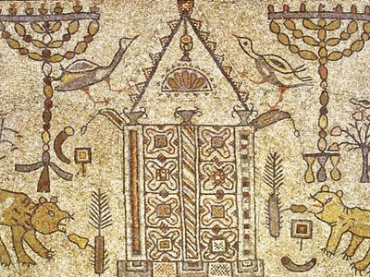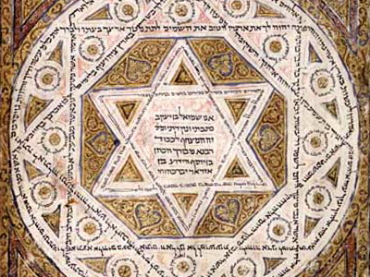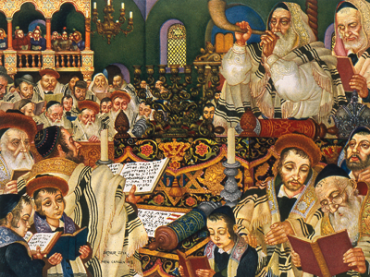Jewish Studies
Jewish Studies is an interdisciplinary field studying Jews and Judaism in all of their geographical, cultural, social, economic, historical, political, religious, and linguistic contexts, from Late Antiquity through the modern period. The Judaism in Context series features monographs and edited collections that traverse the wide landscape of Jewish Studies.
Lesser Deities in the Ugaritic Texts and the Hebrew Bible
A Comparative Study of Their Nature and Roles
Series: Gorgias Ugaritic Studies 7
ISBN: 978-1-59333-820-6
A comparative work on the nature and various roles of the lesser deities, the so-called angels, in the Ugaritic texts and the Hebrew Bible. Sang Youl Cho insists on the necessity for a comparative study between the two religious literatures from Ugarit and ancient Israel. The present study is interested in their membership in the heavenly council, their kinship among the deities, and their roles such as messengers, warriors, mediators, or servants, which have numerous similarities in the Ugaritic texts and the Old Testament.
$177.00
The Testament of Solomon
Series: Analecta Gorgiana 56
ISBN: 978-1-59333-871-8
An excellent translation follows a critical essay, which argues that the Christian elements of the text do not point to a Christian author, but rather indicate that this work is a Christian recension of a Graeco-Jewish original.
$90.00
The Secret of the Jerusalem Temple
The Embracing Cherubim and At-One-Ment with the Divine
Series: Deities and Angels of the Ancient World 1
ISBN: 978-1-59333-840-4
In this thoroughly provocative book, the late Eugene Seaich makes a detailed study of the intractable mystery of the Jerusalem temple. Using historical sources and ingenious detective work, Seaich suggests that the cherubim in Solomon’s temple were portrayed in a copulatory embrace. Aware that this thesis is not entirely novel, the author builds a substantial case in its favor and traces the influence of the atonement (at-one-ment) theology behind the concept through Israel’s wisdom school, New Testament and Gnostic sources, up through the Middle Ages.
$207.00
Science and Hebrew Tradition
ISBN: 978-1-59333-836-7
The issue of science versus religion is as old as the Renaissance. A new bombshell was brought to this issue when Charles Darwin discovered natural selection as the mechanism of evolution. Known as “Darwin’s bulldog”, Thomas Huxley anticipated modern-day discussions on the issue of science and religion. Among the topics included here are evolution versus Genesis, the authorship of the Pentateuch, and a history of paleontology. Huxley’s final offering is an anthropological study of the evolution of theology. For the student who wishes to trace the history of this debate, Huxley is essential reading.
$178.00
Intermediaries in Jewish Theology
Memra, Shekinah, and Metatron
By George Moore
Series: Analecta Gorgiana 60
ISBN: 978-1-59333-875-6
A philological study of the usage of Memra, Shekinah, and Metatron in Tragumic and Cabbalistic literature that combats nineteenth century Christian attempts to read these as references to the Second or Third Persons of the Trinity.
$41.00
An Estimate
ISBN: 978-1-59333-954-8
Concerned with the continuing, and growing, anti-Semitism of his day, Jacobs laid out a statement of the Jewish contribution to civilization. Beginning with the convention of Jewish self-recognition as the people of the book, he sketches the relationship between the church and the Jews. He notes that Jews in the Middle Ages were intellectual intermediaries and their works had a profound impact on Medieval thought. Their roles in commerce and capitalism are explored. Noting the contribution throughout history of Jews to the cause of liberality, Jacob makes a profound case for seeing the deep impact Judaism has made on the modern world.
$166.00
Materialien zur Kritik und Geschichte des Pentateuchs
ISBN: 978-1-59333-962-3
Originally published in two volumes, this edition of the Arabic translation of the Pentateuch stands as one of Lagarde’s lasting contributions to biblical scholarship. Critical editions make frequent reference to this work. Included are two translations of Genesis into Arabic, along with a single version of the remaining pentateuchal books, also in Arabic. The first translation of Genesis represents the tradition of the Paris Polyglot, translated directly from the Hebrew, while the second is a cantena text from the Syriac tradition, representing two-thirds of Genesis. Lagarde’s study provides a valuable text-critical tool and easy access to the Arabic versions of the material.
$189.00
Hieronymi Quaestiones Hebraicae in Libro Geneseos
Series: Analecta Gorgiana 72
ISBN: 978-1-59333-964-7
Written in the scholarly Latin of his day, Lagarde considers in this brief study the questions Jerome raises on the Hebrew of the book of Genesis. In an abridged commentary form, Lagarde follows the questions in the order in which the book of Genesis presents the material. Beginning with the creation, Lagarde skips along to the phrases of Jerome’s text that raise questions and provides his insights about them. Presuming that the reader of the Vulgate will understand the Latin of the original, the comments on the material are likewise written in Latin.
$48.00
Megillat Taanit as a Source for Jewish Chronology and History in the Hellenistic and Roman Periods
Series: Analecta Gorgiana 63
ISBN: 978-1-59333-879-4
Zeitlin’s masterful work supplies the Megillat Taanit’s text and a translation as well as a deft reading of this source’s utility for the history of the Jews from the Maccabees to the Great Revolt.
$59.00
The Jews in Persia
Their Books and Practice
Series: Analecta Gorgiana 66
ISBN: 978-1-59333-882-4
This essay provides a detailed description of each manuscript the author acquired during this sojourn among the Jews of Persia. A discussion of the rituals of the Jewish people which the author met offers great insight into their liturgical life.
$41.00
The Jews in the Works of the Church Fathers
Sources for Understanding the Agaddah
Series: Analecta Gorgiana 67
ISBN: 978-1-59333-883-1
In this stellar study of what the works of select patristic authors (Justin Martyr, Clement of Alexandria, Origen, Eusebius Ephraem, and Jerome) reveal about the Aggadah, Samuel Krauss offers an insightful and provocative reading of the sources.
$53.00
The Book of Micah
Translation, Commentary, Notes and Edited Text
By Paul Haupt
Series: Analecta Gorgiana 68
ISBN: 978-1-59333-884-8
This work is a compilation of two articles by Professor Haupt on the book of Micah. Together, these articles provide an excellent resource for the study of the book of Micah, both for the layperson and the scholar.
$59.00
The Book of Nahum
Translation, Commentary, Notes and Edited Text
By Paul Haupt
Series: Analecta Gorgiana 69
ISBN: 978-1-59333-885-5
Presenting an original translation with introduction and commentary as well as an edited Hebrew text along with critical notes, this is an excellent resource for the study of the book of Nahum, both for the layperson and the scholar.
$43.00
The Book of Canticles
Translation, Commentary, Notes and Edited Text
By Paul Haupt
Series: Analecta Gorgiana 74
ISBN: 978-1-59333-887-9
This work is a compilation of three articles by Professor Haupt on the Book of Canticles, also known as the Song of Songs. It is an excellent resource for study, both for the layperson and the scholar.
$57.00
The Septuagint Text of Hosea Compared with the Massoretic Text
Series: Analecta Gorgiana 75
ISBN: 978-1-59333-889-3
This essay takes a text critical approach to the comparison between the Septuagint and Massoretic texts of Hosea. Its reproduction seems timely as Septuagint studies have seen increased interest in recent times.
$41.00
The Songs of the Return (Psalms 120-134)
A Critical Commentary with Historical Introduction, Translation and Indexes
Series: Analecta Gorgiana 76
ISBN: 978-1-59333-890-9
Appended to this thesis is a short work, which stood in place of a proposed work on the precise topic of Stevens’ thesis. The shorter piece, by Professor Paul Haupt focuses specifically on Psalm 130.
$70.00
History of the Printed Editions of the Old Testament
Series: Analecta Gorgiana 78
ISBN: 978-1-59333-891-6
Offering a comprehensive study of the history of the recensions of the Hebrew Bible down to the author’s day, this essay provides the reader with a veritable genealogy of the different versions of the Hebrew Scriptures.
$47.00
Samaritan Pentateuch Manuscripts
Two First-Hand Accounts
Series: Analecta Gorgiana 79
ISBN: 978-1-59333-892-3
The three essays in this volume address the physical, historical and literary features of what were at the time two of the very earliest clearly datable manuscripts of the Pentateuch known to exist.
$43.00
Perspectives on Hebrew Scriptures III
Comprising the Contents of Journal of Hebrew Scriptures, Vol. 6
By Ehud Ben Zvi
ISBN: 978-1-59333-976-0
This volume incorporates all the articles and reviews published in Volume 6 (2006) of the Journal of Hebrew Scriptures.
$227.00
Jews in Psychology and the Psychology of Judaism
ISBN: 978-1-59333-969-2
Contributions by four of the seven major theoretical innovators in modern psychology, Sigmund Freud, Max Wertheimer, Abraham Maslow, and Noam Chomsky, are explored against the backdrop of their Jewish heritage. The psychological wisdom in Jewish religious practices and culture is highlighted as well, from a psychodynamic perspective.
$65.00
The Ethics of Violence in the Story of Aqhat
By Chloe Sun
Series: Gorgias Ugaritic Studies 8
ISBN: 978-1-59333-975-3
An examination of the ethics of violence in the Ugaritic story of Aqhat using the conventions of characterization and the conflicting points of view. The points of view of the divine characters El, Baal, Anat, Yatpan, are contrasted with the points of view of the human characters, Aqhat, Dan'il and Pughat, in order to bring out the multi-dimensional aspect of Anat's violence.
$141.00
L’église des deux Alliances
Mémorial Annie Jaubert (1912–1980)
Series: Orientalia Judaica Christiana 1
ISBN: 978-1-59333-083-5
The book represents a collection of articles devoted to the memory of Annie Jaubert, a French scholar known for her research on the calendrical teachings of the Hebrew Bible, the Second Temple pseudepigrapha (1 Enoch, the Book of Jubilees), and Qumran literature. The articles discuss various aspects of Jaubert’s work on early Christian and Jewish calendars, including her solution to an old problem of the conflicting chronologies for the Passion Week in the Synoptic Gospels and the Gospel of John. The volume also contains the complete bibliography of Jaubert’s scholarly works and a biographical sketch of her life.
$142.00
The Coups of Hazael and Jehu
Building an Historical Narrative
Series: Gorgias Biblical Studies 37
ISBN: 978-1-59333-833-6
The Coups of Hazael and Jehu offers a narrative reconstruction of the events surrounding the rise of Hazael to the throne of Aram-Damascus and Jehu to the throne of Israel in the mid-eighth century. These near-simultaneous dynastic changes were parts of a major shift in the political, military, and economic structure of the Levant, which took place as the mighty armies of Assyria pushed into the region. The book argues that Jehu’s bloody overthrow of Joram and Hazael’s irregular seizure of power after the death of his predecessor were not independent events, but responses to the Assyrian threat.
$132.00
Writings on Semitic Ephemera
Series: Analecta Gorgiana 82
ISBN: 978-1-59333-894-7
Originally published in two small volumes of Semitic ephemera written in German, this collection of observations of Paul de Lagarde still contains his cogent insights into the world of Semitic linguistics. Critical remarks on the book of Isaiah introduce his characteristic detail on a number of verses in the prophetic book. The second selection concerns the clarification of Akkadian (Chaldean) words occurring in the Hebrew Bible. In the second major section of the work, de Lagarde presents the leaves of the Septuagint of Codex Sarravianus found in Paris. This annotated Greek material comes from the books of Exodus, Leviticus, and Numbers.
$59.00
Studies in the Peshitta of Kings
The Transmission and Revision of the Text, Relations with other Texts, and Translation Features
Series: Texts and Studies (Third Series) 7
ISBN: 978-1-59333-853-4
This monograph examines the manuscript variants of the Peshitta (the standard Syriac translation) of Kings, with special attention to the manuscript 9a1. Manuscript 9a1 is of critical importance for the textual history of Kings, and Walter argues that there is overwhelming evidence that the non-9a1 Mss attest to an extensive revision. This monograph also discusses translation features of the Peshitta of Kings with special attention paid to harmonization and the leveling and dissimulation of vocabulary. Walter also treats the vorlage for the translation and treats its relation to the LXX and the Targumim.
$130.00
Filter by
Filter by price
Filter by manufacturer



























